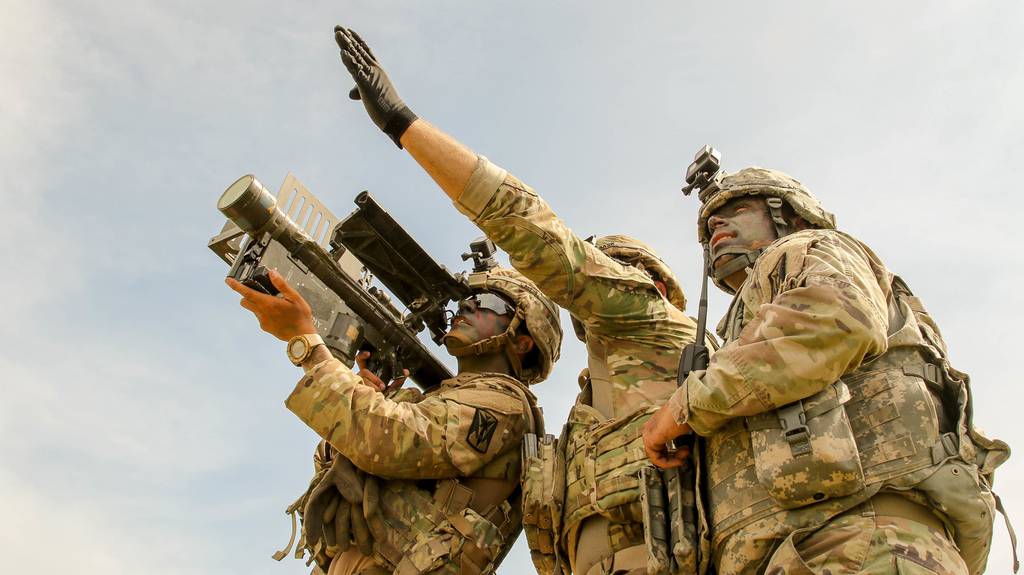
Winston Churchill described a sobering theme of the Second World War: “How the great democracies triumphed, and so were able to resume the follies which had so nearly cost them their life.” Democracies have historically tended to believe peace will prevail, failing to act with boldness or speed to head off a gathering threat.
Today, the United States faces the greatest likelihood of high-end conflict in decades, particularly with an increasingly aggressive People’s Republic of China. America has immense potential power to deter China or to win a direct conflict. But its power is just that — potential — if Congress does not act with the seriousness this global environment demands and provide sufficient, on-time funding for the U.S. military’s urgently needed transformation.
Six months into the fiscal year, Congress has not passed the fiscal 2024 defense budget. This has forced the U.S. military to operate under a continuing resolution, stopgap funding that prevents the Department of Defense from starting new modernization programs or modifying procurement priorities to outfit the joint force. Since 2011, the U.S. military has lost almost five cumulative years under continuing resolutions — for which soldiers, sailors, airmen, Marines and guardians pay the heaviest price if conflict begins.
The DOD has never been under a full-year continuing resolution but faces this risk today. Insufficient U.S. defense budget growth has compounded the dangers, with each service losing an average of 16.8% in buying power between FY21 and FY24 (equivalent to $30 billion for the Army).
The image of the United States careening from one self-inflicted fiscal crisis to another while failing to provide timely and sufficient funding to its military during a period of unprecedented competition and conflict surely reduces our security and global standing. Our allies and partners are watching, and they are not reassured.
Our adversaries, however, are emboldened by what they see.
As Deputy Secretary of Defense Kathleen Hicks put it, U.S. adversaries are not “slow[ing] down while we get our house in order.” Amid wars in Europe and the Middle East, China has continued modernizing its military at breakneck speed. Beijing has doubled its defense spending since 2015 and announced a 7.2% increase this year. It has the largest armed forces in the world with over 2 million active personnel, is investing in conventionally armed intercontinental missile systems, and is rapidly modernizing its nuclear, space and cyber capabilities.
China’s rhetoric and coercive actions also are escalating. While providing support to Moscow as it attacks Ukraine, Beijing has dropped references to “peaceful” reunification with Taiwan while acting aggressively toward the Philippines in the South China Sea. Unlike the U.S. military, which has significant global commitments, the People’s Liberation Army can focus predominantly on its neighborhood. It is unlikely that an outside observer would conclude that the United States has a clearer focus on the stakes than the People’s Republic of China. This focus must start at home — in Congress.
The funding impasse would imperil U.S. national security in any era but is especially pernicious today, as it holds back a joint force primed to adapt to warfare’s rapidly changing character. Based on insights from the Ukraine war, the U.S. Army is accelerating production of 155mm artillery ammunition from about 14,000 rounds per month in 2022 to 100,000 by 2025. It also has planned increases in precision munitions, like Patriot missiles and Guided Multiple Launch Rocket System munitions, both of which have proved highly effective in Ukraine and would be critical in any high-end U.S. conflict.
Surging and pre-positioning this crucial materiel is an essential insurance policy against the People’s Liberation Army’s advantages in mass and proximity to likely flashpoints, and is also a critical element of reassuring allies and partners. However, the U.S. Army cannot actualize production surges under a continuing resolution or without additional funding.
Production delays are only the tip of the iceberg. The Army buys equipment, but it fights formations. Achieving combat power requires a concert of factors to work in unison. The Army can only maximize the value of the units that are on the front line of strategic competition with China if it has predictable and sufficient funding to give them the best equipment, increase the quality of their training and exercises with joint and coalition partners, and recruit smart, fit soldiers.
Cutting-edge organizations like the Army’s multidomain task forces, which compete with the People’s Liberation Army across land, sea, air, space and cyberspace, or formations like the security force assistance brigades, which are building a network of U.S. allies and partners, defend U.S. interests every day. We cannot ask soldiers to do this job without sufficient support.
Additionally, as the Army works to address its recruiting challenges, what message does a repeated lack of timely funding send to potential recruits, their families or those currently serving?
Then-Army Chief of Staff Gen. George Marshall, shortly before World War II, said: “For almost 20 years we had all of the time and almost none of the money; today we have all of the money and no time.” The United States has a shrinking window to deter strategic conflict. This will require financial costs, but they are small compared to war. Congress must pass the fiscal 2024 defense appropriations and all remaining fiscal 2024 appropriations bills before March 22. Congress also should add additional funding for the Army and the DoD, commensurate with the burdens our service members shoulder across the globe.
Washington must act seriously and decisively for the joint force and the American people. Our soldiers and their families deserve nothing less.
Retired U.S. Army Gen. Robert Brown is president and CEO of the Association of the United States Army. He previously led U.S. Army Pacific.
- SEO Powered Content & PR Distribution. Get Amplified Today.
- PlatoData.Network Vertical Generative Ai. Empower Yourself. Access Here.
- PlatoAiStream. Web3 Intelligence. Knowledge Amplified. Access Here.
- PlatoESG. Carbon, CleanTech, Energy, Environment, Solar, Waste Management. Access Here.
- PlatoHealth. Biotech and Clinical Trials Intelligence. Access Here.
- Source: https://www.defensenews.com/opinion/2024/03/18/the-us-militarys-edge-is-at-stake-in-the-funding-fight/



